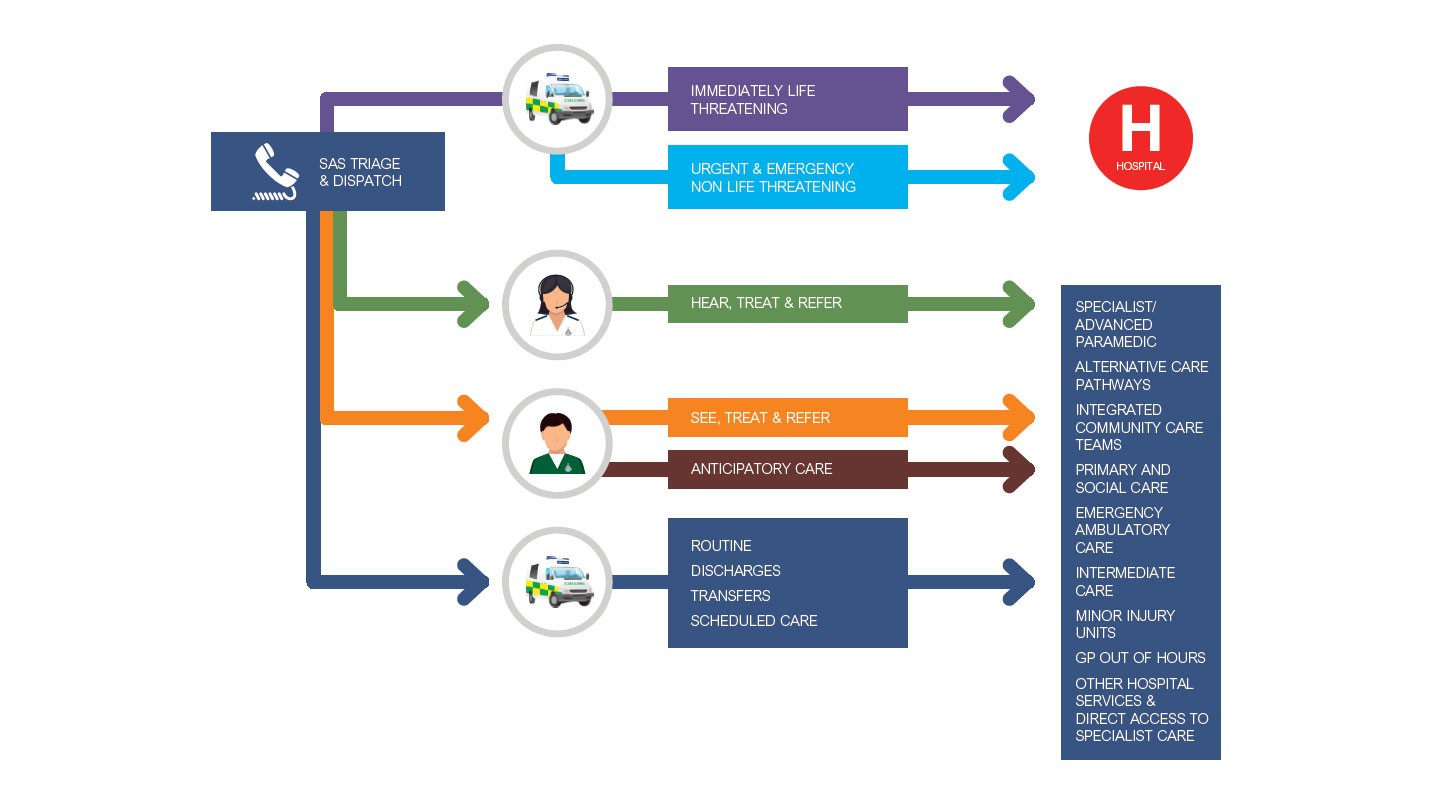Our Clinical Response Model

Explaining our Triage Terms
Immediately Life Threatening
Patients whose condition is potentially life-threatening and a fast response is vital. This accounts for less than 10% of 999 calls received. These patients will be responded to by skilled Paramedics and will normally be taken to A&E or specialist care. An example would be a patient in cardiac arrest.
Urgent and Emergency
Some emergency and urgent calls will also require a quick response and conveyance to hospital i.e. GP calls and non life threatening emergencies.
Hear, Treat & Refer
Patients whose condition is not serious enough to require an ambulance to attend or likely to result in any need to go to hospital. These patients can safely be given telephone advice by a Paramedic, referred onto NHS 24 for further advice or referred onto another service, such as a GP. An example would be a person with flu like symptoms.
See, Treat & Refer
Patients whose condition requires face-to-face assessment by a skilled Paramedic but, in many cases, may be safely and effectively treated by that Paramedic at scene without any need to go to hospital. Alternatively, these patients may be referred directly to more appropriate services. An example would be an elderly patient who has fallen but is uninjured who could be referred onto a specialist community team and their care could be managed at home.
Anticipatory Care
Patients living with one or more long-term conditions whose care can be managed proactively at home, where a package of care has been put in place to support patients to stay at home. Specialist Paramedics can help deliver this care package working alongside colleagues in health and social care. An example would be a patient living with Chronic Obstructive Pulmonary Disease whose acute exacerbation requires urgent care.
Non-Emergency (Scheduled Care)
Patients who require to be admitted or discharged from hospital, or transferred between hospitals for further treatment and patients attending hospital for a scheduled outpatient appointment. These patients require a degree of clinical or mobility support but are in a stable condition. An example would be a patient admitted for elective surgery or attending an outpatient appointment where ambulance transport was required.